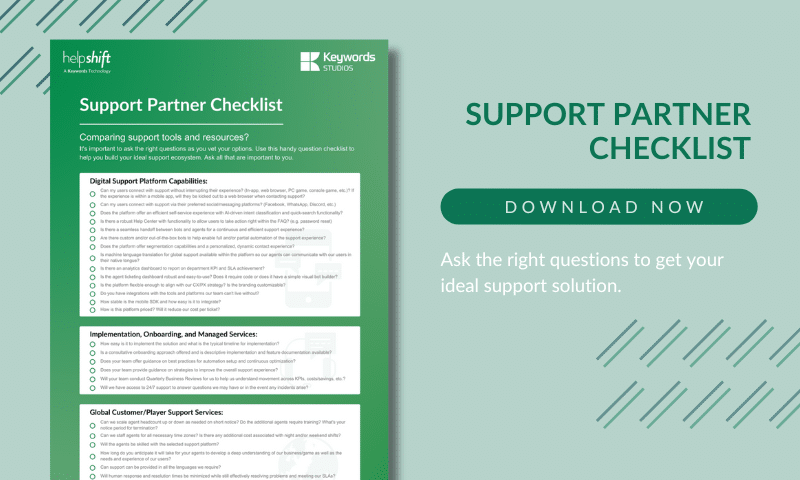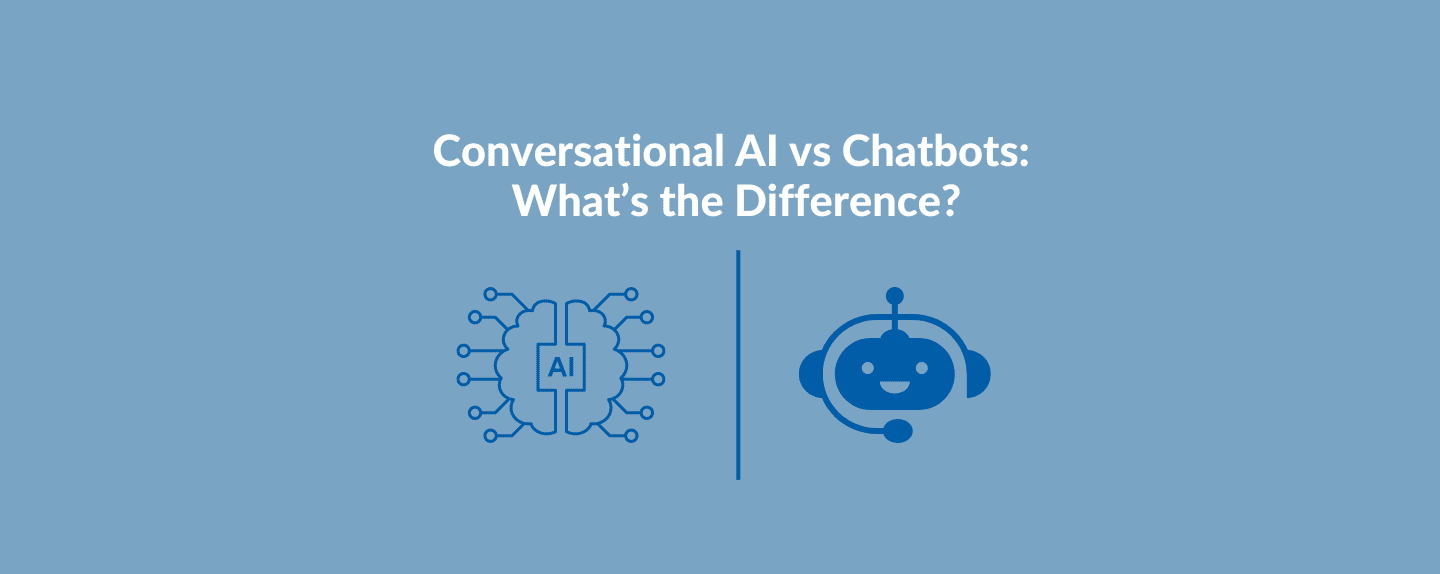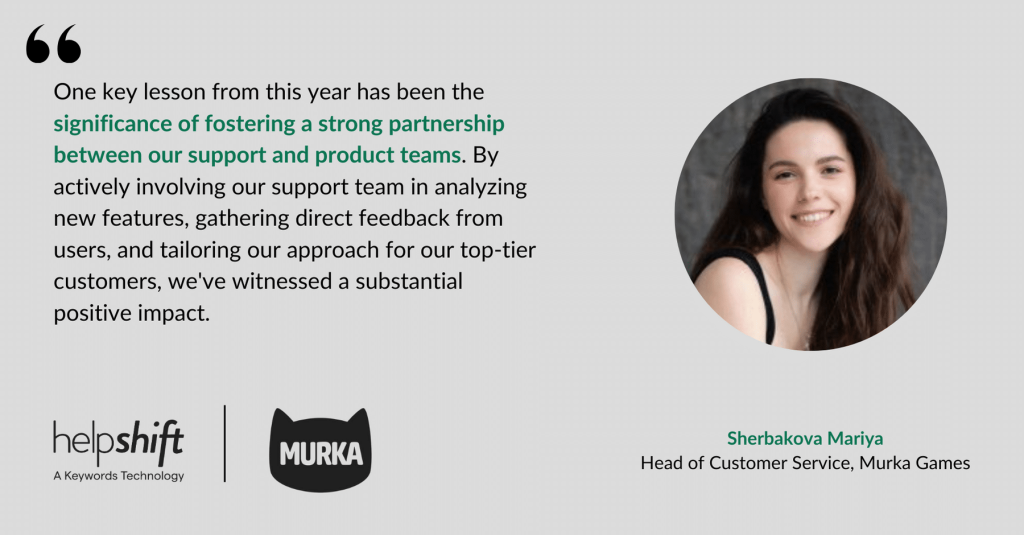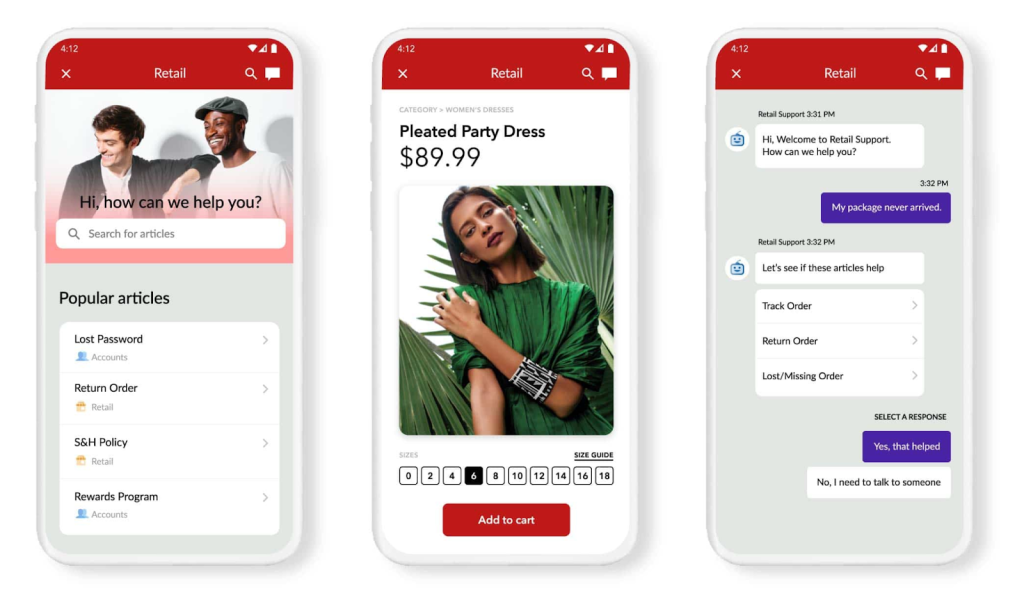As businesses look to improve their customer experience, they will need the ultimate platform in order to do so. Conversational AI and chatbots can not only help a business decrease costs but can also enhance their communication with their customers.
Although the terms are similar, they are not the same and the technologies that use them can vary greatly.
When it comes to conversational AI and chatbots, it’s important for businesses to know about the similarities and differences between the two terms, in order to understand which technology offers the best benefits for their customer service.
Understand how the two technologies relate and what the key differences are below.
What is a Chatbot?
A chatbot is a tool that can communicate using a rule-based system and sometimes machine learning and natural language processing (NLP).
There is a range of benefits that chatbots can provide for businesses, starting with how they can manage customer requests outside of work hours, decrease service costs and improve customer engagement.
When words are written, a chatbot can respond to requests and provide a pre-written response. As standard chatbots are rule-based, their ability to respond to the user and resolve issues can be limited.
The chatbot’s ability to understand the user’s inquiry is typically based on pre-written prompts that it was programmed with prior. In this scenario, if the user’s inquiry falls outside of one of the pre-programmed prompts, the chatbot may not be able to understand the user or resolve their problem.
However, with the use of machine learning, chatbots can adapt further and be programmed into more multi-functional programs that can better understand the user and provide more appropriate pathways to resolution. This is where conversational AI comes into play.
What is Conversational AI?
Conversational AI is the technology that can essentially make chatbots smarter. Without conversational AI, rudimentary chatbots can only perform as many tasks as were mapped out when it was programmed.
Conversational AI doesn’t rely on a pre-written script, it uses natural language processing which allows it to understand inputs in conversational language and respond accordingly. Rather than relying purely on machine learning, conversation AI can leverage deep learning algorithms and large data sets to decipher language and intent.
This enables automated interactions to feel much more human and can utilize the data to embark the user down a meaningful support path towards the resolution of their problem.
In a conversational AI tool like Helpshift, for example, rather than being limited to resolution pathways pre-programmed by a human, the AI can determine the most ideal set of pathways via intent classification. Resolution becomes quicker and more effective over time as the AI continues to learn and the support journey becomes more streamlined.
Chatbots vs Conversational AI: How They Relate
Though some chatbots can be classified as a type of conversational AI – as we know, not all chatbots have this technology.
While rule-based chatbots mainly use keywords and basic language to prompt responses that have already been written, a conversational AI chatbot can mirror human responses to improve the customer experience.
The byproduct of this is better customer satisfaction. Conversational AI chatbots also lead to greater efficiency gains. By answering simple, frequently seen customer enquiries, they allow customer service agents to spend more time on tasks that require human input.
Conversational AI vs Chatbots: The Differences
There are many differences between basic chatbots and conversational AI. These chatbots are programmed to follow a set of rules, whereas conversational AI can recognize and interpret human language when responding to any customer responses.
Here are the main differences:
Conversational AI
- Capable of voice and text commands, inputs and outputs
- Can be deployed in omnichannel strategies, websites, voice assistants, smart speakers and call centers
- Natural language processing
- Focused on dialogue
- Continual learning
- As a business’s database is updated, so does the conversational AI interface
Chatbots without conversational AI
- Only capable of text-only commands, inputs and outputs
- Can only be used in a single channel only
- Pre-written script
- Rule-based, can’t handle complex tasks
- A time-consuming and complicated building process
Although non-conversational AI chatbots may not seem like a beneficial tool, companies such as Facebook have used over 300,000 chatbots to perform tasks.
Are Chatbots or Conversational AI Better for Businesses?
Both chatbots and conversational AI can be effective in the customer service industry, especially when handling a large number of support requests on a daily basis.
Due to the limited configuration of rule-based chatbots, they can be deployed quickly for small to medium-sized businesses that don’t require a large amount of data to respond to customer requests.
However, many businesses may find that an AI conversational chatbot offers more benefits, such as:
- Lower customer service costs: Repetitive processes can be automated using conversational AI to save costs on training customer service agents.
- Improved customer satisfaction: Using conversational AI in customer service has proven to achieve a 3.5x increase in satisfaction rates
- Increased agent efficiency: Conversational AI can reduce wait times for customers, allowing agents to focus on other projects.
- Efficient data storage: Conversational AI can be trained to leverage internal data, improving their understanding of what customers are asking about.
- Consistent support: Conversational AI can improve consistency across a business, automating and maintaining a good level of customer support every time a customer has a query
Conversational AI chatbots are highly scalable. Their multi-lingual capabilities allow them to translate customer requests into a range of languages and still remain efficient.

Talk to AI and Chatbot Experts
By now, you should know that the two technologies are not at odds. With further innovation in artificial intelligence, conversational AI will continue to become even more effective.
Both chatbots and conversational AI have a range of benefits to support customer service staff, allowing agents to save time and deal with the more complicated responses from customers.
Helpshift understands the importance of both chatbots and conversational AI. Our customer service platforms utilize the power of bots and automated workflows to both streamline and improve the customer experience.
Look at the following resources to learn more about chatbots and conversational AI:
- Downloadable guide: The Beginner’s Guide to Customer Service Chatbots and AI
- Product page: Customer Service Bots Made Easy
- Blog post: How to Help Your Business Now with Customer Service Chatbots




